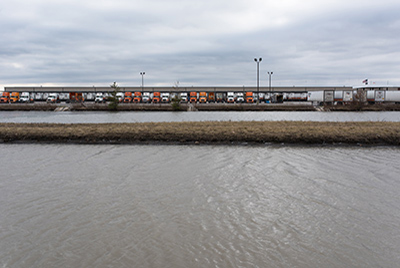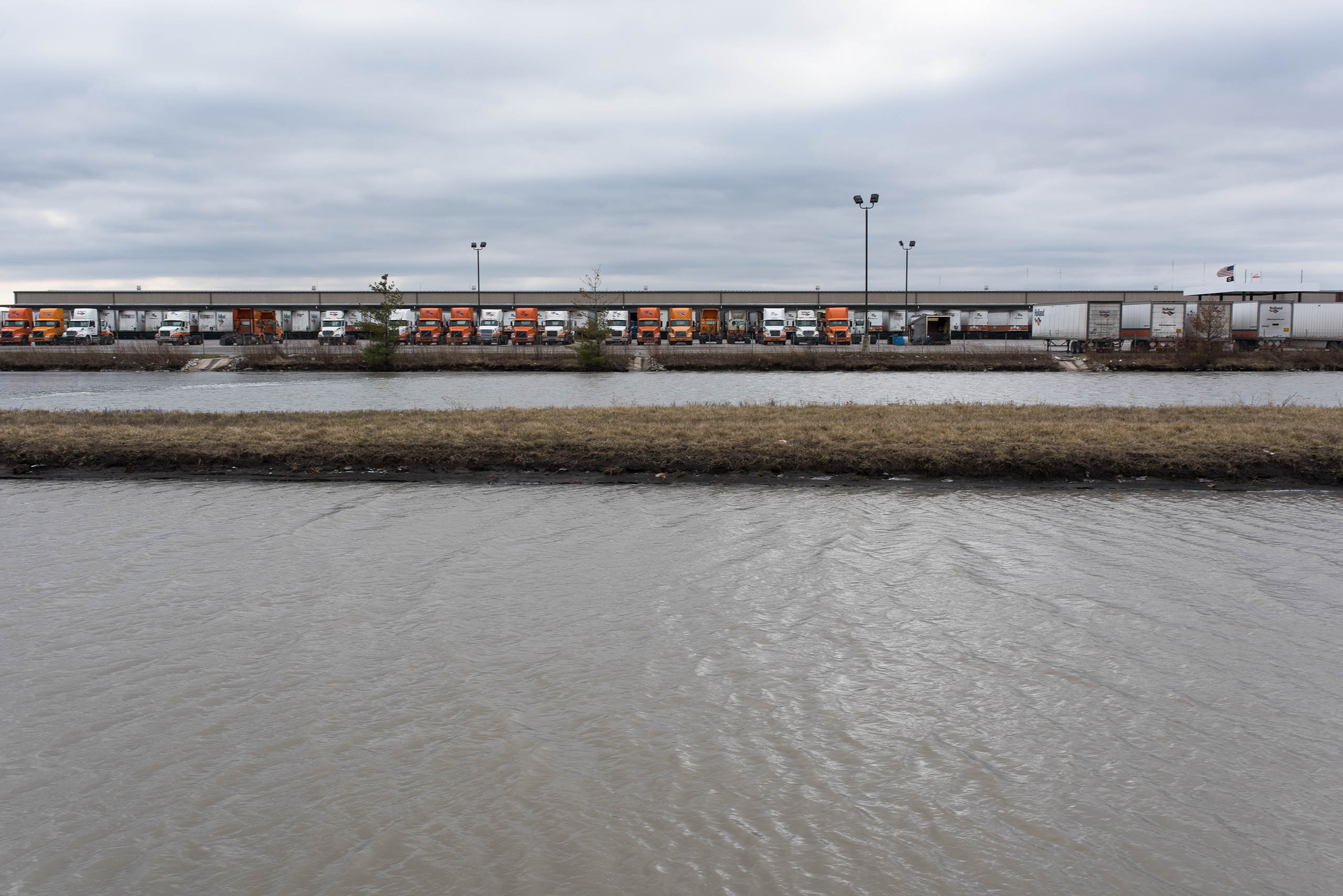



The Gateway Commerce Center (GCC) capitalizes on the dense infrastructural buildup of the region—with rail, barge, truck, and air facilities all close at hand. From a logistical standpoint, the geographic and infrastructural position of the American Bottom remains a site of nearly messianic centrality—one whose success is a sort of geographic fait accompli. And, if current tenants are any indication, the likes of Hershey, Unilever, and Procter & Gamble agree.
The low-slung warehouses might look like the degree-zero of architecture, but they are best understood as economic instruments. All part of Foreign Trade Zone (FTZ) No. 31—a public/private partnership run by the Tri-Cities Regional Port District—the FTZ status of the park eases and eliminates a number of duty requirements for materials that are stored, exported, or otherwise pass through the commerce center. As a hot spot in the geography of economies, it is also an Illinois Enterprise Zone and a Tax Increment Financing (TIF) district.
The GCC's website positions the center along numerous well-rehearsed labor and industrial lines—primarily, as an alternative to the Southern California ports that are known for labor strife, and consequentially as second only to Chicago in its railroad workforce and within reach of taking over from the Windy City's as the country's largest freight manager. The park's master plan includes Interstate-grade roadways and infrastructure with high-capacity utilities within reach. The north boundary of the park has access to the main line of the Norfolk Southern Railway, and is flanked by the 62-acre Triple Crown intermodal center.